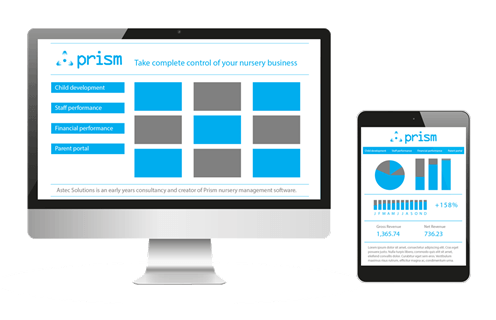It’s 9am. You’ve a long list of important things to do (of course you do, you work in early years). You’ve had your cup of tea, checked the headlines on your favourite news website and now it’s time to crack on. There’s just one more article you want to read…
Before you know it, it’s lunch time and, although you’re now an expert on the latest EYFS framework update, you’ve still got the same long list of important things to do.
Chasing the talking rabbit
In Lewis Carroll’s famous book ‘Alice’s Adventures in Wonderland’, Alice found the urge to chase the talking rabbit down the rabbit hole. Whereas Alice was transported into a peculiar fantasy world, when you clicked that irresistible link, you were transported into a peculiar world called The Internet.
The Internet is full of useful, useless and entertaining information. Once you start exploring a subject of interest, you’ll be exposed to a seemingly never ending supply of irresistible links somehow each more irresistible than the last.
It’s easy to believe the link that says “This Is The Most Important Thing You’ll Read About EYFS Today”, so don’t kick yourself too hard for losing your morning. Instead, vow to become more disciplined with your time.
Build a schedule and stick to it
The solution to your ills is building (and sticking to) your very own schedule.
This means blocking out hours in your diary for different types of activity. For example: every morning from 8-9 is for checking and responding to emails, the rest of Wednesday morning is for accounts and billing and so on.
It sounds simple and, once you get the hang of it, it is – as long as your schedule is realistic.
Some scheduling tips
If the responsibilities of your role dictate that you experience multiple interruptions during the working day, you’ll find that tasks take longer than you expected. It’s therefore a good idea to spend a week recording exactly how you use your time. This will give you a better idea of how long a task takes and what time of the day (or week) is best for certain tasks.
Plan tasks that require concentration at times when there are fewest interruptions and, if you need to, block out some ‘quiet time’ by letting your team know not to disturb between specified hours.
Make sure you plan in some contingency in case something takes longer than expected (and something will take longer than expected!) and don’t forget to schedule in short breaks.
If you want to get advanced, you can even plan alarms on your calendar to alert you when it’s time to move on to the next task.
Get back to work!
Now that you have your brand new schedule, all you need to do is put it into practice. Before you get started, I thoroughly recommend that you click on more of the irresistible links on this website. Some rabbit holes are just well-worth exploring…
• should small providers be worried about large nursery chains?
• a good workman never blames his tools
• work smarter, not harder
Richard Duddy
Latest posts by Richard Duddy (see all)
- Officrèche found its voice (and slapped me right in the face) - 17 May 2016
- What makes a good blog post? - 28 January 2016
- Choosing nursery management software: how to select an effective solution - 24 August 2015



Recent Comments